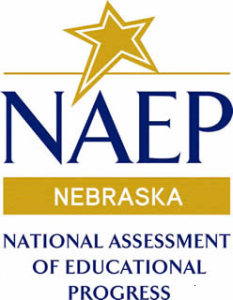National Assessment of Educational Progress (NAEP)

What is NAEP?
While states have their own unique assessments with different content standards, the National Assessment of Educational Progress (NAEP), provides a “common yardstick” to measure what students across the nation know and can do. NAEP assessments cover ten subject areas, including mathematics, reading, writing, and science. The results of these tests are reported in the Nation’s Report Card.
NAEP provides useful information about student academic achievement at the national and state level. Reporting for a NAEP “National Year” gives a broad view of what students in the nation know and are able to do. National Year assessments are given in years that end with an odd number and cover a variety of content areas. Even numbered years are “State Years.” Selected Nebraska students will take State NAEP in 2024. Historically, National Year assessments are given in years that end with an even number and cover a variety of content areas. Odd numbered years are “State Years.” Due to the pandemic and the need to postpone the 2021 State NAEP, students will take the State NAEP in 2022. State Year NAEP assessments primarily cover the content areas of reading and math. State level results allow us to learn more about student achievement in Nebraska, while also allowing for comparisons between our state and the nation.
Why is NAEP Important?
Established by Congress in 1969, NAEP was created to provide a common assessment for accurately evaluating the performance of American students. More recently, the Federal Every Student Succeeds Act (ESSA) required the NAEP assessment to be given in reading and mathematics at grades 4 and 8. Information about NAEP results is included every other year in each state’s annual report card. Federal law requires that states and districts receiving Title I funding participate in the State NAEP reading and mathematics assessments in grades 4 and 8 every two years.
Who takes NAEP?
Every year a sample of students is drawn to represent the entire student population in grades 4 and 8. NAEP assessments are administered to this sample of students, rather than the entire population. This sampling greatly reduces the cost of testing and significantly reduces the burden placed on school staff, while still providing highly reliable results.
Since 1992, anywhere from 24 to 350 schools in Nebraska have participated in NAEP. State Years require a much larger sample of Nebraska students than do National Years. Test scores are always kept confidential. Performance on NAEP is never reported for individual students, schools, or districts.


